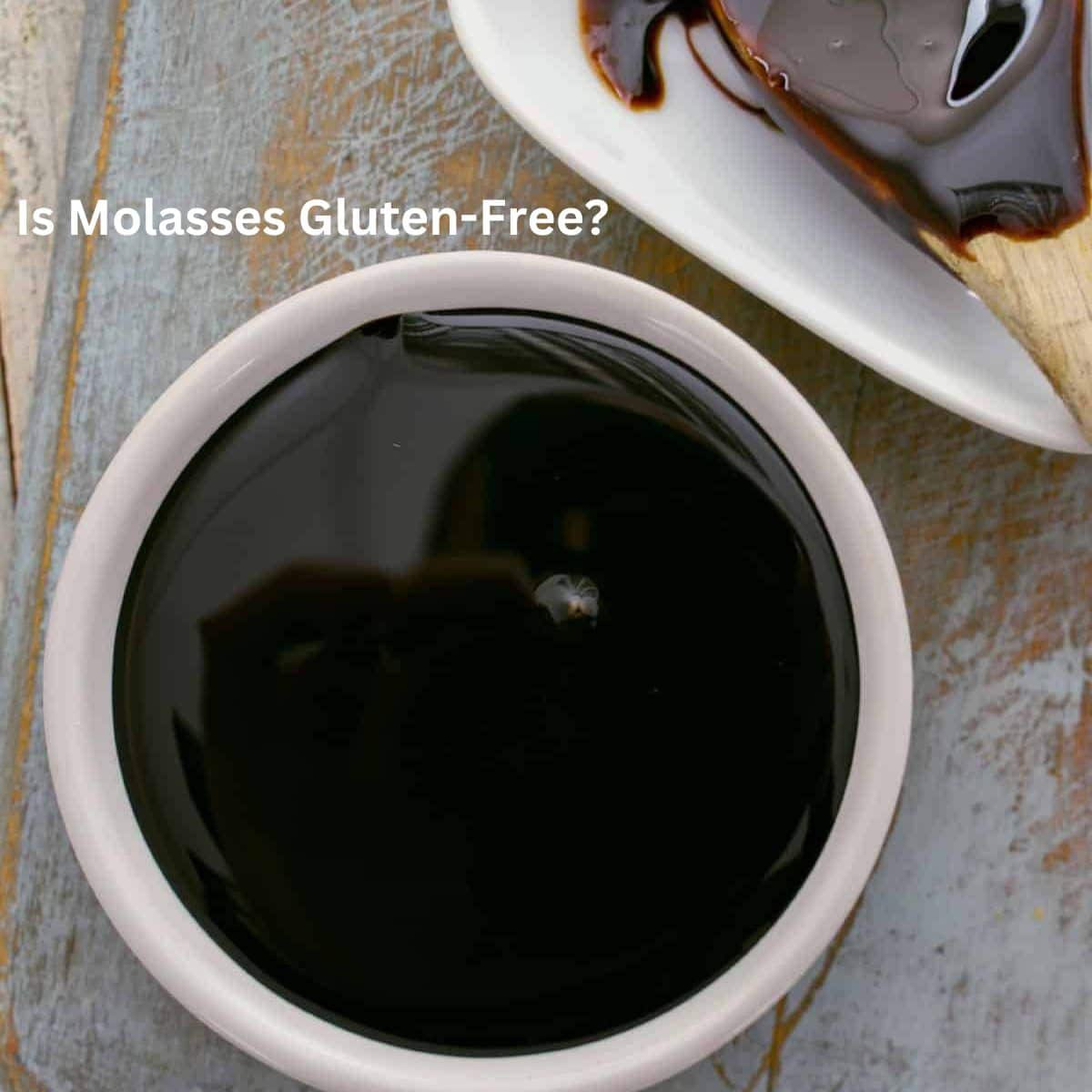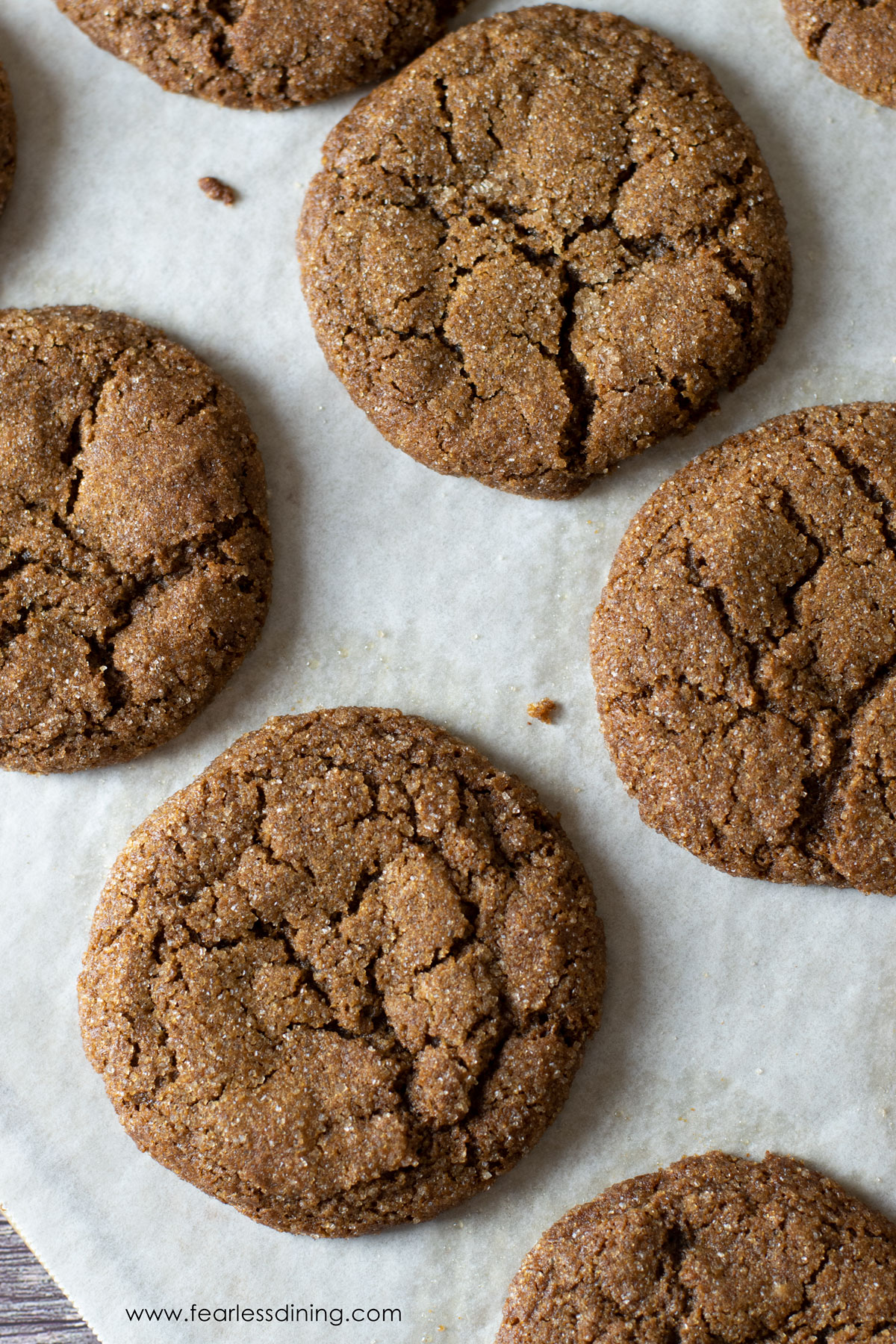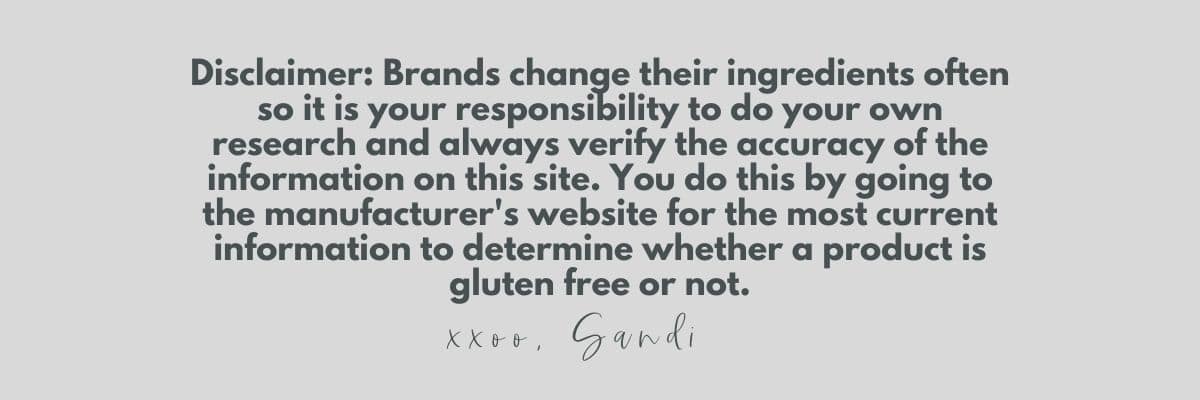Molasses is a versatile, thick liquid syrup that you will find in many grocery stores. You can use it in your favorite sweet and savory recipes. Since molasses is commonly used, those with celiac and gluten intolerance may wonder, is molasses gluten free.
This post may contain affiliate links. Please read our Disclosure Policy.

Would you like to save this recipe?
What Is Molasses?
Molasses is a dark-colored syrup that is left over from the sugar-making process after crystallizing sugar out of sugar cane or beet juice. To make sugar, the sugar cane or sugar beets are crushed to extract the liquid, then boiled until the sugars crystallize and precipitate out.
The dark thick syrup that remains after this crystallization is called molasses. Sugar cane juice typically undergoes three cycles of boiling and crystallization for optimal sugar extraction, resulting in different grades of molasses.
Sometimes, sulfur dioxide is added to molasses to preserve them from spoiling. You can tell by the label with sulfur added because they are labeled “sulfured,” and sulfured molasses are less sweet than unsulfured molasses.
If you love to bake, be sure to check to see what baking ingredients are gluten free.
Types of Molasses
You can find several types and flavors of molasses, including blackstrap, pomegranate, sorghum, date, and carob.
This Gluten Free Pumpkin Molasses Cookies recipe will love the molasses flavor!
Answer: Is Molasses Gluten Free?
Yes, molasses is gluten free. Molasses is made from sugar cane or beet sugar, it does not contain gluten protein. You would rarely have issues with other products being made on shared equipment with molasses because of how sticky molasses is.
This makes them totally safe for people suffering from celiac disease and those who have gluten intolerance.
Brands Of Molasses:
- Grandma’s Molasses
- Brer Rabbit
- Golden Barrel
- Trader Joe’s Molasses
Ways To Use Molasses:
Molasses is used in both baking and cooking. Molasses is very popular to use in baked goods, especially around the holidays. Baked products like bread, gingerbread cookies, ginger snaps, cookies, and cakes can taste incredible when molasses is included.
Molasses can also be fermented to produce xanthan gum. Xanthan gum is a staple in the gluten free industry as it mimics gluten in acting like a glute to hold baked goods together.
Xanthan gum is a sugar derivative widely used in the culinary and food industry thanks to its strong water-binding and texture-modifying properties. Xanthan gum can be found along with other ingredients on the label of many foods.

Molasses is a great sweetener and sugar substitute. The good news is that it’s gluten-free, so those with celiac and gluten intolerance can consume it.
Recipes Using Molasses:
- These are the best cookies ever. If you love molasses, give this Gluten Free Gingerdoodles recipe a try.
- My old-fashioned Gluten Free Molasses Cookies are perfect for the holidays.
- If you can’t find molasses, this recipe for a molasses substitute is really easy to make.


